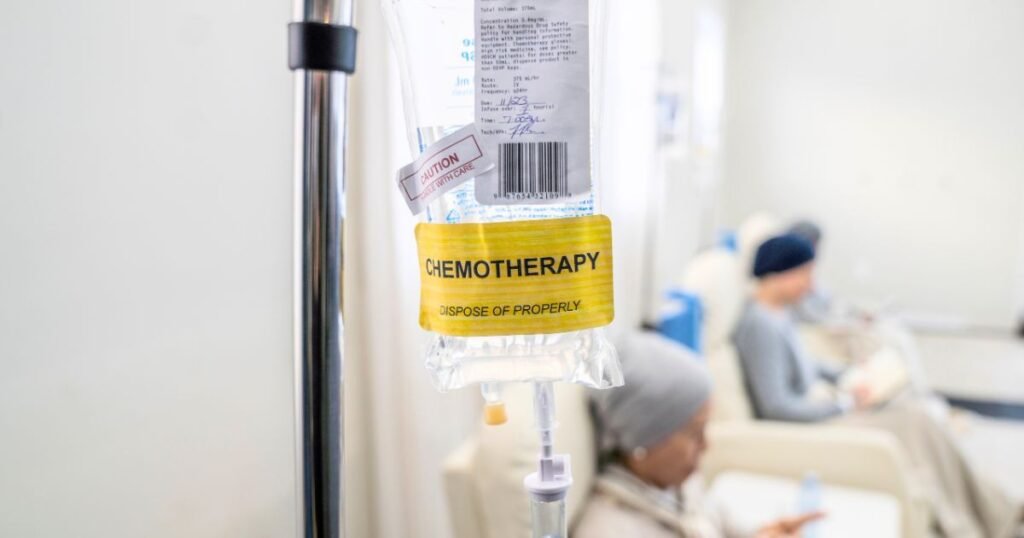Introduction to Synovial Sarcoma:
What is it?
Synovial sarcoma is a rare kind of cancer that affects the soft tissues, typically occurring near the joints in the arms or legs. While it is not as prevalent as other types of cancers, understanding synovial sarcoma is crucial due to its aggressive nature and potential impact on individuals’ lives.
Why is it important to understand?
One of the key reasons why it is important to comprehend synovial sarcoma is its ability to affect people of various age groups, including young adults and adolescents. Unlike some cancers that primarily target specific demographics, synovial sarcoma can strike anyone, making it essential for medical professionals and the general public to be aware of its existence.
Moreover, recognizing the causes and risk factors associated are vital for early detection and prompt treatment. While the exact cause of remains unknown, researchers have identified certain genetic alterations that may contribute to the development of this cancer.
Read More: Cancer
Recognizing the symptoms of synovial sarcoma is also crucial for timely diagnosis. Common symptoms include the development of a painless lump or swelling near a joint, limited range of motion, and discomfort or pain. Knowing these signs, individuals can seek medical attention immediately, potentially increasing the chances of successful treatment and improved outcomes.

Lastly, comprehending the available treatment options is also important for informed decision-making and ensuring the best possible care. Treatment plans often involve a combination of surgery, radiation therapy, and chemotherapy tailored to each individual’s situation.
Understanding the Causes of Synovial Sarcoma: Genetic, environmental, and risk factors
Genetic Factors
Genetic factors play an important in the development of synovial sarcoma. Specific genetic abnormalities, such as a translocation between chromosomes X and 18, have been linked to the development of this cancer. These genetic changes can disrupt the normal functioning of cells, leading to the uncontrolled growth and division characteristic of cancer.
Environmental Factors
Other major crucial factors are environmental factors. Exposure to certain chemicals and toxins, such as vinyl chloride and radiation, has been associated with an increased risk of developing this cancer. However, it is essential to note that these environmental factors alone are unlikely to cause synovial sarcoma and are more likely to act with genetic factors.
Certain risk factors have also been identified that may increase a person’s likelihood of developing synovial sarcoma. Teenagers and young adults are more frequently affected by this cancer, with a slight preference for males. Additionally, individuals with a family history of synovial sarcoma or other soft tissue sarcomas may have an increased risk.
It is crucial to understand that while these factors may contribute to synovial sarcoma development, they do not guarantee its occurrence. Many cases of synovial sarcoma occur spontaneously without any known risk factors.
Recognizing the Signs and Symptoms of Synovial Sarcoma
While this rare form of cancer can occur in any age group, Between the ages of 15 and 40, young adults are the most frequently diagnosed group.
Painless Lump: One of the most noticeable symptoms of synovial sarcoma is the development of a painless lump or swelling. This lump usually occurs in the joints, particularly around the knees, ankles, wrists, or fingers. However, it can also affect other areas, such as the neck or abdomen. Considering any unusual growths or changes in the affected areas is important.
In addition to a lump, individuals with synovial sarcoma may experience pain or tenderness in the affected area. This pain may worsen over time.
Limited Mobility or Stiffness: Other symptoms of synovial sarcoma may include limited mobility or stiffness in the joints, as well as muscle weakness or numbness. It’s important to note that these symptoms can also indicate other conditions. Therefore, it’s essential to get medical advice in order to make a correct diagnosis.

Diagnosing Synovial Sarcoma
Diagnosing Synovial Sarcoma can be a complex process that involves a series of tests and examinations.
Physcial Examination: The diagnostic journey often begins with a thorough physical examination by a healthcare professional. They will carefully examine the affected area, looking for any lumps, swelling, or abnormal growth. Additionally, they may inquire about the patient’s medical history and any relevant symptoms experienced.
Imaging Tests: To confirm its presence, further tests are required, such as imaging tests, including X-rays, CT scans, and MRI scans. These imaging techniques provide detailed images of the affected area, allowing doctors to evaluate the tumor’s size, location, and extent.
Biopsy: After the initial imaging, a biopsy is typically performed. A small sample from the affected area is taken and sent to the laboratory for further examination. The pathologist further analyzes this sample under a microscope to determine whether it is cancerous and to identify the specific type of sarcoma.

In some cases, additional tests may be necessary to confirm the diagnosis or determine the cancer stage. These tests may include blood tests, molecular testing, or genetic testing. Each test provides valuable information that helps oncologists tailor the treatment plan to the individual patient.
It is important to note that the diagnosis of Synovial Sarcoma can be emotionally challenging for the patient and their loved ones.
Types and Stages of Synovial Sarcoma
Synovial sarcoma, a rare form of cancer, presents in various types and stages, each with unique characteristics. There are three main types of synovial sarcoma:
- Monophasic synovial sarcoma is the most common type, characterized by spindle-shaped cells.
- Biphasic synovial sarcoma consists of spindle-shaped cells and glandular structures.
- Poorly Differentiated synovial sarcoma,in contrast, exhibits undifferentiated cells with little resemblance to normal tissue
Staging is essential to evaluating the extent and severity of synovial sarcoma. The TNM system is commonly used to classify the disease.
- T indicates the location and size of the primary tumor.
- N denotes lymph node involvement.
- M shows the presence or absence of metastasis.
In terms of staging, synovial sarcoma is categorized into four main stages: stage I, stage II, stage III, and stage IV.
- Stage I signifies that the tumor is small and localized, confined to the original site.
- Stage II indicates a larger tumor size but is still limited to the initial location.
- Stage III, the tumor has invaded nearby tissues or structures. Stage IV indicates the presence of distant metastasis, where the cancer has spread to other parts of the body.
Treatment Options for Synovial Sarcoma: Surgery, radiation therapy, chemotherapy, targeted therapies, and emerging treatments.
Several options are available to target and eliminate cancerous cells depending on the cancer stage, the tumor size and location, and the individual’s overall health.
1. Surgery: Surgery is often the primary treatment for synovial sarcoma, aiming to eliminate the cancerous cells and surrounding connective tissue. In some cases, this may involve amputation or limb-sparing surgery, which preserves the limb while effectively removing the cancerous cells.
2. Radiation therapy: It involves using high-energy beams to destroy cancer cells. Before surgery, it may shrink the tumor or eliminate any remaining cancer cells. Radiation therapy can also help alleviate pain and control the growth of tumors that are difficult to remove surgically.
3. Chemotherapy: Chemotherapy uses powerful drugs to kill cancer cells throughout the body. It is usually used with radiation therapy or e surgery to target any remaining cancer cells or shrink tumors before surgery. The specific drugs and dosage will depend on the individual case.
4. Targeted therapies: These treatments target the genetic mutations or specific proteins involved in synovial sarcoma’s growth. Targeted therapies block the signals that promote tumor growth, potentially resulting in tumor shrinkage or slowing its progression.
5. Emerging treatments: Research is constantly ongoing to explore new treatment options for synovial sarcoma. Clinical trials may be available for patients interested in trying innovative therapies still in the experimental stage. These trials offer the opportunity to access cutting-edge treatments that may improve outcomes.
Surgical Approaches for Synovial Sarcoma:
When it comes to the treatment of synovial sarcoma, surgical intervention plays a vital role. The primary goal of surgery in synovial sarcoma cases is to remove the tumor and any surrounding affected tissue while preserving as much function and mobility as possible.
Local Excision
The specific surgical approach will depend on various factors, including the location and size of the tumor, as well as the extent of its spread. In some cases, a wide local excision may be performed, which involves removing the cancer and a margin of healthy tissue to ensure complete removal. This approach is commonly used when the tumor is localized and has not spread to other areas.
A more extensive surgical procedure may be necessary in more advanced cases or when the tumor has spread to nearby structures. This could involve removing a more significant portion of tissue, such as muscle, bone, or even organs, to ensure complete tumor eradication.
Limb-Sparing Surgery
In certain situations, limb-sparing surgery may be an option. This approach removes the tumor while preserving the affected limb’s function and appearance. It often involves combining surgical techniques, such as removing the tumor and reconstructing the affected area using grafts, implants, or other innovative methods.

Radiation Therapy
This therapy involves using high-energy waves, such as X -rays or other particles, to target and destroy cancer cells. It can be administered externally or internally, depending on the specific case. The primary benefit of radiation therapy is its ability to shrink tumors and potentially eliminate cancer cells that may have spread beyond the prior site. It is often used before or after surgery to maximize the chances of successful treatment.
However, knowing radiation therapy’s potential risks and side effects is essential. While the treatment is targeted to minimize damage to healthy cells, surrounding tissues can still have some impact. Side effects usually appear in hair loss, fatigue, and skin changes. In some cases, long-term side effects such as organ damage or secondary cancers may occur, although these risks are generally low.
Chemotherapy
Contrarily, chemotherapy uses medications to eradicate cancer cells throughout the body. It can be given intravenously or orally; other therapies are frequently combined.
Chemotherapy is beneficial because it can target cancer cells that have spread beyond the primary site and is considered a systemic treatment.
However, chemotherapy also carries its own set of risks and potential side effects. These drugs are powerful and impact healthy and cancer cells, resulting in hair loss, fatigue, skin changes, and increased chances of infection in the susceptible area.

Targeted Therapies for Synovial Sarcoma
One of the main challenges in treating synovial sarcoma has been its resistance to conventional chemotherapy and radiation. However, targeted therapies have renewed hope for patients with this aggressive malignancy.
Targeted drugs selectively inhibit specific molecules or pathways crucial for cancer cells’ growth and survival. In the case of synovial sarcoma, several molecular abnormalities have been identified as potential targets for therapy.
One such target is the SS18-SSX fusion protein, a hallmark of synovial sarcoma. This fusion protein plays a critical role in driving the growth of cancer cells. Researchers have developed drugs that specifically target this abnormal protein, aiming to disrupt its function and halt the progression of the disease.
Another target explored is the insulin-like growth factor 1 receptor (IGF-1R). Studies have shown that IGF-1R is overexpressed in synovial sarcoma cells, promoting their proliferation and survival. Targeted drugs that inhibit IGF-1R have shown promising results in preclinical and early clinical trials, offering a potential therapeutic avenue for patients with this malignancy.
Furthermore, other molecular abnormalities, such as cyclin-dependent kinase 4 (CDK4) amplification and epidermal growth factor receptor (EGFR) overexpression, have also been identified in subsets of synovial sarcomas. Targeted drugs specifically targeting these abnormalities are being investigated to determine their efficacy in treating this disease.

It is important to note that targeted therapies are still being studied in clinical trials and may not be widely available. However, they hold great promise for the future of synovial sarcoma treatment.
Promising Research and Future Directions
Researchers and scientists have been tirelessly working to unravel the complexities of this rare cancer, leading to several promising developments.
One such area of research is focused on understanding the underlying genetic and molecular mechanisms that drive the growth of synovial sarcoma. By identifying specific genetic alterations and mutations associated with the disease, researchers gain valuable insights into potential targeted therapies that can disrupt these abnormal pathways and halt tumor progression.
Additionally, immunotherapy has emerged as a promising avenue in cancer treatment, including synovial sarcoma. Immunotherapeutic approaches aim to harness the body’s immune system to recognize and destroy cancer cells.
Innovative techniques such as precision medicine and personalized therapy are also being explored in synovial sarcoma. By identifying specific biomarkers, researchers hope to develop targeted therapies that can effectively tackle the individual characteristics of synovial sarcoma tumors, leading to more precise and successful treatment outcomes.
Furthermore, advancements in diagnostic tools and imaging techniques have contributed to the early detection and accurate staging of synovial sarcoma. This allows for timely intervention and improved treatment strategies. Integrating advanced imaging modalities, such as magnetic resonance imaging (MRI) and positron emission therapy (PET), has dramatically enhanced diagnostic accuracy and aided surgical planning.
Coping with Synovial Sarcoma:
Coping with synovial sarcoma can be a challenging journey, not just for the patients but also for their families.
- Emotional support is vital in helping patients, and their loved ones navigate difficult times. Whether seeking counseling services, joining support groups, or leaning on the solid support system of family and friends, having a network of understanding individuals can provide comfort and solace.
- Lifestyle changes are often necessary when dealing with synovial sarcoma. Patients may need to adjust their daily routines, diet, and physical activity levels to manage their symptoms and improve overall well-being.
It’s important to remember that coping with synovial sarcoma is a multifaceted process that requires a holistic approach. By seeking emotional support, making necessary lifestyle changes, and utilizing available resources, patients and their families can better navigate the challenges of synovial sarcoma and find strength in their journey toward healing and recovery.
What is the survival rate of synovial sarcoma?
The 5-year survival rate for synovial sarcoma is 50-60% in adults, and 5-year metastasis-free survival is between 40 to 60%. A European study group called Pediatric Soft Tissue Sarcoma reports a 90% 5-year survival.
Is synovial sarcoma curable?
Synovial sarcoma is not curable in all cases, but it can be cured in most the cases. The treatment options include surgery, chemotherapy, and radiation therapy.
How aggressive is synovial sarcoma?
Synovial sarcoma is a high-grade malignancy, a fast-growing and aggressive cancer. However, the aggressiveness can vary depending on the tumor’s size, the cancer’s location, and the patient’s age.
At what age does synovial sarcoma occur?
Synovial sarcoma can occur at any age, but it is most common in people between 15 and 35. It is also more common in men than in women.
Can you have sarcoma for years and not know it?
Sometimes, it is possible to have sarcoma for years and not know it. This is because sarcoma can grow slowly and sometimes without symptoms. However, seeing a doctor if you have any concerns about a lump or mass is important.
What are the beginning stages of sarcoma?
A painless lump or mass often characterizes the beginning stages of sarcoma. The lump may be red, swollen, or warm to the touch. As the cancer progresses, the lump may become larger and more painful. Additional symptoms that may appear include fever, fatigue, and weight loss.
Can sarcoma appear suddenly?
Sarcoma can appear suddenly in some cases. However, it is more common for sarcoma to develop slowly over time.
Can Stage 4 synovial sarcoma be cured?
Stage 4 synovial sarcoma is the most advanced stage of the cancer. It means the cancer has invaded other organs of the body such as bones, liver and lungs.While it is not always possible to cure Stage 4 synovial sarcoma, treatment options can help prolong and improve quality of life.
What is the death percentage of sarcoma?
The death percentage of sarcoma varies depending on the type of sarcoma, the stage of the cancer, and the patient’s age and overall health. In general, the death percentage of synovial sarcoma is about 30%.
Has anyone been cured of sarcoma?
Yes, people have been cured of sarcoma. However, it is important to note that sarcoma is a complex disease without a one-size-fits-all cure. The treatment for sarcoma will vary depending on the type of sarcoma, the stage of the cancer, and the patient’s age and overall health.
Where does synovial sarcoma spread to?
Synovial sarcoma can spread to other body parts, such as the lungs, liver, bones, and lymph nodes. The most common sites of metastasis for synovial sarcoma are the lungs and the bones.
I hope this answers your questions about synovial sarcoma. Please let me know if you have any other questions.






